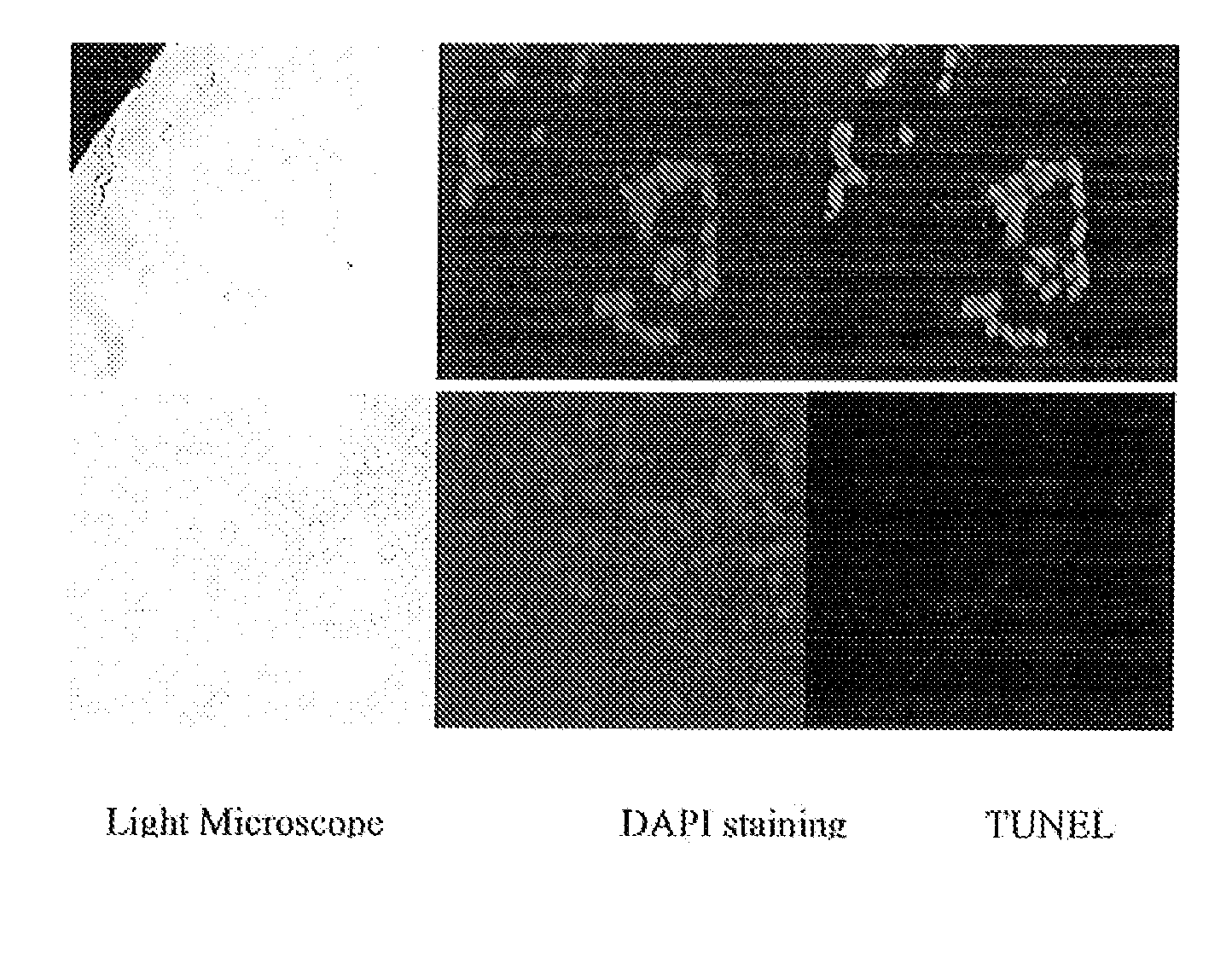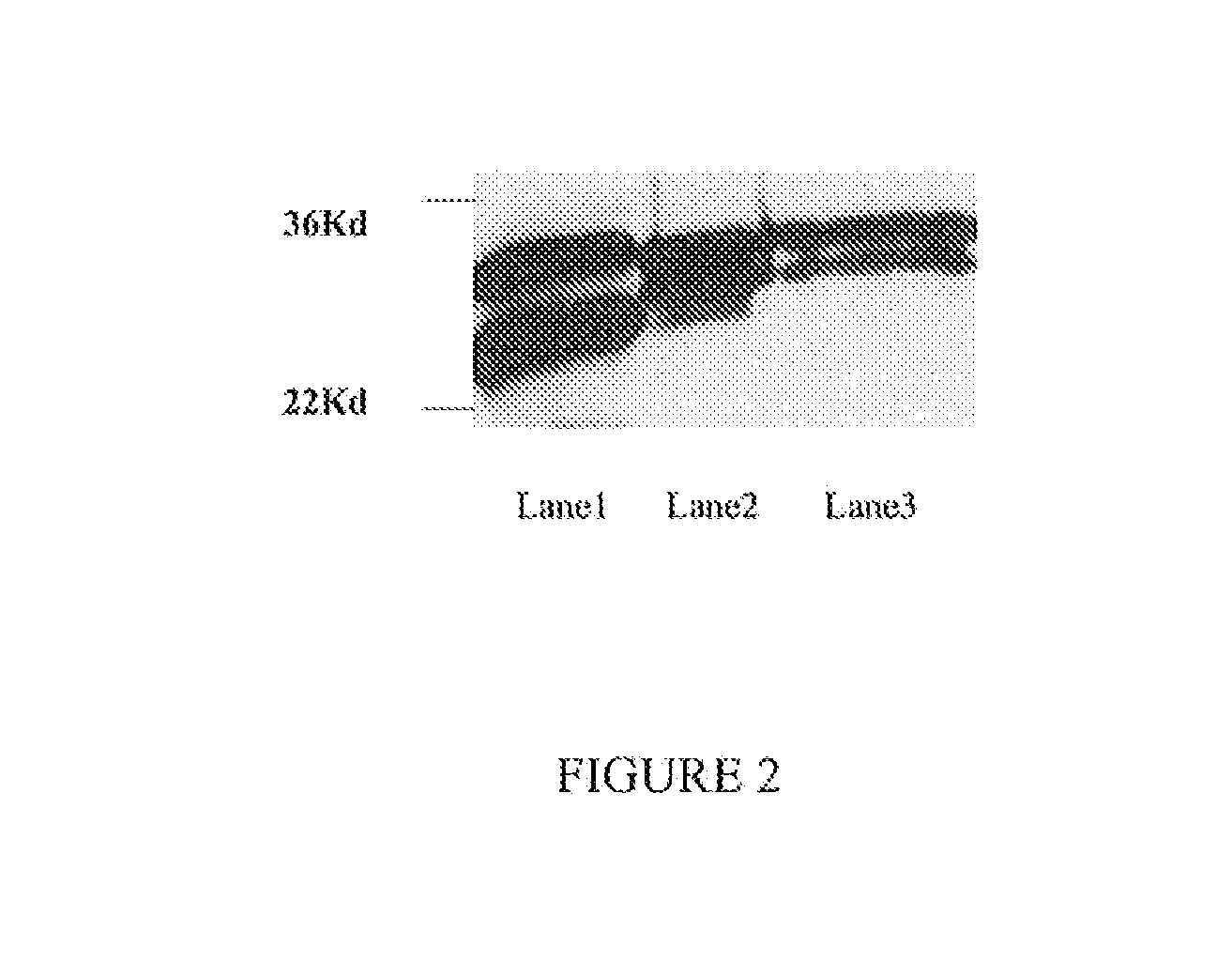Fragments of antibodies to epidermal growth factor receptor and methods of their use
a technology of epidermal growth factor and fragments, applied in the field of molecular biology and medicine, can solve the problems of low interaction effect of human and murine monoclonal antibody studies, unethical human use, etc., and achieve the effect of enhancing the response of the subj
- Summary
- Abstract
- Description
- Claims
- Application Information
AI Technical Summary
Benefits of technology
Problems solved by technology
Method used
Image
Examples
example 1
Materials and Methods
[0098]Phage Library, Helper Phage and Bacterial Strain
[0099]A naïve Fab library was constructed on phagemid vector Pcomb3X from the Scripps Research Institute (La Jolla, Calif.) as described elsewhere (Jiao Y, et al. Mol Biotechnol 31:41-54 (2005)). Before the first round of panning, the library was titrated and 2×1013 clones were collected. The VCSM 13 helper was purchased from Stratagene (Cat:#0450468). The E. coli strain XL-1-blue was also from Stratagene (Cat: #200158, Genotype: Δ(mcrA)183 Δ(mcrCB-hsdSMR-mrr)173 endA1 supE44 thi-1 recA1 gyrA96 relA1 lac [F′ proAB lacIqZΔM15 Tn10 (Tetr)]. Another E. coli strain Top 10 F′ for expressing the Fab was from Invitrogen (Cat: #C3030-03, Genotype: F′{lacIq Tn10 (TetR)} mcrA Δ(mrr-hsdRMS-mcrBC) Φ80lacZΔM15 ΔlacX74 recA1 araD 139 Δ(ara-leu)7697 galU galK rpsL endA1 nupG). Both of these E. coli strains were tested to preclude contamination with wild type phage.
[0100]Cell Lines and Purified EGFR
[0101]Two cell lines were ...
example 2
Flow Cytometric Analysis
Fluorescence Activated Cell Sorting or “FACS’
[0113]After observing the binding of the Fab to native EGFR, the binding capacity of the Fab to the EGFR in living cells was further tested. FACS analysis demonstrated binding of Fab to cells of the A431 cell line (˜106 human EGFR per cell) while no significant binding to murine NIH 3T3 fibroblasts was detected (FIG. 5). In FIG. 5: the upper graph shows an NIH-3T3 control, and lower graph shows the A431 cell line.
[0114]The NIH 3T3 and A431 cells were prepared as described for the panning procedure. The cells were incubated with 100 μg / ml Fab at 4° C. for 45 minutes after blocking with 1% BSA-PBS at 4° C. for 30 minutes. Cells were stained by incubation with a 1:25 dilution of FITC-labeled anti human Fab IgG (Sigma, F5512) at 4° C. for 20 minutes, followed by FACS analysis (using Cellquest software; Becton Dickinson Bioscience). The control group was cells incubated only with the secondary antibody.
example 3
[0115]After purification, the binding capacity of the Fab to the EGFR (native conformation) was detected by immunoprecipitation. As shown in FIG. 4, the Fab bound native EGFR from an A431 lysate as detected by western-blotting with the further confirmation of the positive control. In FIG. 4, L1 is a positive control (A431 lysate Western blot); L2 is an immunoprecipitate (IP) of an A431 lysate; L3 is an NIH-3T3 cell immunoprecipitate; L4 is a negative control (Fab+RIPA buffer+Protein A beads). The Fab molecule did not precipitate any protein from the NIH3T3 cell lysate.
[0116]500 μl of lysate of each cell type (from about 5×105 cells) was mixed with 50 μg Fab, 100 μl Protein G Agrose beads (Invitrogen, 15920-010) and incubated overnight at 4° C. and. The next day, the beads were washed 3 times in 0.1% Tween-PBS and resuspended in 40 μl 2×SDS-“loading buffer”, heated at 100° C. for 10 minutes, then centrifuged at 5,000 g for 5 minutes, and the supernatant collected f...
PUM
| Property | Measurement | Unit |
|---|---|---|
| Fraction | aaaaa | aaaaa |
| Composition | aaaaa | aaaaa |
| Level | aaaaa | aaaaa |
Abstract
Description
Claims
Application Information
 Login to View More
Login to View More - R&D
- Intellectual Property
- Life Sciences
- Materials
- Tech Scout
- Unparalleled Data Quality
- Higher Quality Content
- 60% Fewer Hallucinations
Browse by: Latest US Patents, China's latest patents, Technical Efficacy Thesaurus, Application Domain, Technology Topic, Popular Technical Reports.
© 2025 PatSnap. All rights reserved.Legal|Privacy policy|Modern Slavery Act Transparency Statement|Sitemap|About US| Contact US: help@patsnap.com



